This morning I woke up early (on a Saturday, what’s wrong with me?) so I could pick up Cormac and go on our next adventure. It wasn’t amazingly exciting, just plans to drive around Fukushima in an area we had not really had a chance to go see. A little road trip. I had a loose goal to reach the town of Hinoemata, which is famous for having kabuki things in it, but it didn’t really matter if we got there.
We started our drive south towards Koriyama. I had noticed a sign for a 5-tiered pagoda and temple on the way, so we decided that would be our first stop.
 |
| The entrance to the park nearby has a cute little mascot of the Onibaba! |
We drove across the Abukuma River and parked across from the temple. The temple is called Kanzeji. We spoke with the wife of the owner of the temple and a woman who worked there at the ticket booth.
When we went in we saw great piles of stones piled on top of each other. They were not precarious or in danger of falling over, the stones looked like they had sat that way for 1000 years.
There was a temple and a few smaller shrines ahead. We walked towards the boulders first and started reading the signs that were placed around the area. After reading these signs I realized where we really were, we were at the cave of “Onibaba!” The piled stones didn’t really resemble a cave, there were too many openings and it was not connected to a hill. It was all above ground, but it was close enough I guess.
Onibaba is a relatively famous story in Japan. It tells the tale of a woman whose grief turned her into a demon. The story begins with a woman who must leave her husband and her daughter to work for a noble family as a nursemaid for a little girl. Before leaving her own family, the woman gave her daughter a little pouch, an omamori, to bring her good fortune. She then left her daughter forever so she could go to work.
The little daughter of the noble family was a sweet girl, she was nice and well-behaved, but the strange thing was, the girl never spoke a single word. The noble family hired many doctors and nobody could figure out why the girl was mute. Finally a soothsayer was called, and told the family that the only thing that would cure the girl would be to have her eat the liver of a fetus taken from its mother’s womb. The family was determined that the daughter grow up and find a husband, which would be quite difficult if she could not speak. So they assigned the nursemaid to go find them the liver of a fetus to feed to their daughter.
So the woman set out to find a mother willing to give up their child to help the noble family. Not surprisingly everyone she met said no. So the woman continued searching for many years.
Eventually the woman grew weary with age and came upon a cave along the Abukuma River. She decided that this is where she would stay. She built herself a straw hut underneath the overhanging stones, and decided she would lie here as an innkeeper and rent a spare room in her hut to travelers. If a pregnant woman stopped for a nights rest, she would take the child by force.
 |
| This is a statue of one of the incarnations of Kannon, not of Onibaba. |
It wasn’t until a few years later that a pregnant woman and her husband stopped at her hut for a rest. She welcomed them warmly and cooked a good meal for them. What the couple didn’t know, however was that the old woman had poisoned the food of the pregnant woman, and she was biding her time until nightfall.
When the couple retired to bed, the old woman stayed awake and waited. Sometime after midnight the pregnant woman woke from her sleep with intense abdominal pains. She sent her husband off to find some medicine to help her. Her husband left her in the hut alone with the old woman.
It was then that the old woman fell on the pregnant woman and viciously attacked her! She cut her stomach open with a knife and removed the fetus and cut out the liver of the fetus. Finally she had accomplished what she had been sent to do all those years ago!
As the pregnant woman lay dying at the old woman’s feet, she pulled out a small pouch and said, “My mother gave this to me to protect me. Please find her and tell her that I have passed on from this world.” And with that, she died.
The old woman recognized the pouch as the same on she had given to her own daughter so many years before! As the old woman realized that she had killed her own daughter and grandchild, she sank to the floor in overwhelming grief. She couldn’t believe what she had done, how fate could be so cruel! Her mind snapped under the weight of her grief, and she turned into an old demon woman, an Onibaba!
She stayed in this cave from that moment on, this time, eating any traveler who was unfortunate enough to stay the night. Years passed in this manner, and the back-most room in her humble house was piled high with the white bones of her meals.
 |
| There are many stones all around the temple grounds that have words and pictures carved into them. |
One day a trailing Buddhist monk came by the hut looking for lodging. Onibaba granted him a spare room and fed him a nice meal. But before the meal was done, Onibaba realized she didn’t have enough firewood for the remainder of the evening. She told the monk that she was off to go find some firewood for a short while, but she would be back soon. She warned him not to go snooping around her house, and to especially not go looking in the rear-most room of the hut. And off she went.
The monk was overcome with curiosity and started peeking into the different rooms of her small house. He saved the rear-most room for last. When he peeked in he saw the room was filled with tall mounds of white bones!
It was then that the Onibaba returned home and saw the monk peeking into the back room. She flew into a rage, horns grew from her forehead, and flung herself at the Buddhist monk to tear him apart!
The monk narrowly missed her attack and grabbed his bag and ran out of the house and kept running. Onibaba was right behind him! It was then the monk remembered he had a statue of the god(dess) Kannon-sama in his traveling pack. He turned a corner, pulled the statue out of his pack and prayed to Kannon-sama for help and deliverance.
Onibaba turned the corner and saw the monk, and she dashed at him again. It was then that Kannon-sama descended from the clouds in the sky in a beautiful halo of light! He drew out a bow and a holy arrow (the same kind of arrows used in Kyudo) and he shot Onibaba through the eye!
Onibaba fell to the ground and turned back into an old woman as she died. Kannon-sama ascended into the clouds, and the monk ran to the nearest village to get help.
The monk returned the next morning with many villagers in tow and told them the story of the Onibaba. The villagers took her body and buried her on top of the hill next to her cave. The monk then built a small Buddhist temple next to her cave and remained to care for the temple and spread the story of the Onibaba.
So over time more small shrines and monuments were added to the temple grounds, and the story of Onibaba spread far and wide.
On the temple grounds there is also a small museum that has Onibaba artwork and tells you the story of the Onibaba.
We walked around the grounds for a while, there is a nice pond, and the area feels peaceful and it is nice. There were also a few temple cats walking around that were friendly.
The woman who works there and sits in the ticket booth came up to us and asked us if we wanted to see inside the temple, we said of course!” and she showed us the interior.
She then asked us if we would like to pray to the Buddha, or Kannon-sama. I said that I wouldn't mind, but I didn’t know how to do it the correct way. So she showed both Cormac and I how to properly pray inside a Buddhist temple! She stood next to us as we knelt and prayed, and she explained what to do step by step. We lit incense and placed it in a triangle shape, with the point facing towards us, in the incense sand bowl. She then told us how to clap and bow and let us ring one of the bowl-bells at the altar. I went first, and Cormac went after I did. I asked if it was ok if I took pictures, and she said that it was fine. So I have pictures of Cormac praying in a Buddhist temple with guidance.
I was super impressed with how nice that was of her. She wanted us to experience everything that the temple had to offer, so she took time to show us. It was really sweet of her. After that we spoke to her and the wife of the owner outside the ticket booth for a good long while. It was nice conversation, and I was able to understand most of what she said to us and reply in kind.
She lives in Fukushima City and she swore she had seen Cormac around before. She spoke to us about why we were in Japan, what our favorite things about Japan were, and how we were finding our lies in Japan. She was genuinely curious and not just making small talk. The wife of the temple owner said that she had been helping her husband take care of the temple for decades and, his family had been taking care of it for at least a century, although I don’t remember exactly how long. Her son was in Tokyo going to college and he loved speaking English. She wished he was there at that time to talk to us. I love hating these kinds of conversations! It makes me feel warm and fuzzy even now as I think back on it.
After we were done talking to them we walked around to the back of the temple grounds to the five-tiered pagoda and had a look. You can see the five-tiered pagoda behind the temple, it is not technically on the temple grounds, so you do not have to pay to go see it.
From there we climbed the hill behind the temple and pagoda and see the grave of Onibaba, a shrine and a half circle of monoliths with writing on them.
We walked down the opposite side of the hill from where we ascended and there was a park and a children’s center. On the hill between us and the park there was a cemetery with many plots of land still empty. I dont know about anyone else, but I was dying to get a close up look of the cemetery (huehuehuehue.)
On one side there were some old, traditional building where people used to live and work. The signs were a bit worn down, so I couldn’t read too much, but one of the building used to be used for harvesting silk from silkworms.
One seemed to be a big house for the family who harvested the silk, but I can’t be sure.
 |
| Why, yes, that IS a giant penis hanging from the rafters! |
There was another, smaller house nearby.
Behind the houses and workshops there was a lovely pond. And a little gift shop with ice cream, although it was closed at the time. We walked past it and saw a little tea house on a mini-peninsula in the pond. It was surrounded by water save for a narrow bridge of land. You were able to peek in and see the rooms where people would have tea, and where the servants would walk around out of view of the guests. You could also see where the tea was prepared before being served.
We decided to walk through the park on the way back to the car. It was a Saturday afternoon, so there were dozens of children and mothers playing on the playgrounds.
 |
| There were lots of other painted, metal fruits and vegetables, not just oranges! |
On the way out we saw a zip line, and we couldn’t help ourselves.
It was quite swift, and the momentum at the end of the line whipped you forward and threatened to drop you on the ground. I went twice and was able to hang on both times, but Cormac fell off the one time he went. But hanging on came at a price, the rope gave me a wicked rope burn and cut on my inner thigh.
 |
| The reverse of the sign when you are leaving the park entrance/tunnel. I love the "verymuch" as one word. |
From here we continued on towards Minamiaizu, but we stopped again before too long to go ride on a large Ferris wheel next to Shopping Mall Festa in Koriyama. It only costs about $5 to ride around the Ferris wheel, and it takes about fifteen minutes to go around. Here are some pictures from the top.
After that we drove southwest. We passed through open fields and valleys for about an hour. We came upon a shrine with a good-sized cemetery next to it, somewhere near the town of Tenei.
 |
| Manhole cover for the area. It has some koi fish on it. |
The shrine looked a little run-down, but it stilled looked alright.
There were grave markers that were new right next to ones that were old and eroded, there were a few that had been destroyed, why I don’t know, and were nothing more than a pile of stones.
There were a number of new grave markers dotted around the old ones. It is an interesting juxtaposition.
We walked back to the car and I saw a torii gate on the border of a field and a forest.
We took off across the field, and walked up to the torii gate. We peered in through the trees, and there were three small shrines just behind the tree line. They were not ornate, but they did look like they were being maintained. We realized that this was not a public shrine, but a private, family shrine behind some houses. We snapped a few pictures and went back to the car.
From here we drove onto Hatori Lake. It is located south of Lake Inawashiro. Our altitude had climbed, so there was still snow on the ground, but not on the road. The lake was still covered in ice, with some spots having melted through. We stopped at a scenic spot and spend a good chunk of time gazing at the lake.
We drove on, but a few minutes later we saw a large torii gate on the side of the road, I pulled over and parked a couple hundred feet later and we walked back. There was a large staircase going up the hill past the torii gate and when we reached the top we saw this sight.
Just another shrine right? Perhaps, but what made this one different was that this one had been abandoned. There were holes in the floor and sides of the shrine and side buildings. This is a building to the left, but not the actual shrine itself.
The front of the shrine was open and you could just walk in.
There were no decorations or altars, there was only some trash left behind. This entire shrine and grounds were clearly not being maintained anymore. Past the main room of the temple you could walk to the very back of the shrine. Usually, people are not allowed back here and this is where the gods of the shrine dwell, but since it had been abandoned, we saw no reason to refrain from checking it out.
One of the side shrines was shut up like a cupboard, but was easily opened with the turn of a latch, there was another small shrine inside, but it wasn’t much to look at and you could see mold growing inside, so we shut it back up and left.
The trees surrounding the shrine were quite thick, but you could see the lake beyond the hill, but it wasn’t much of a photo op. The sun was starting to set so we started to head out.
A few minutes later we saw a bridge crossing the lake, so we took a few minutes to stop and look around.
We continued from here to the west until we got to a small town called Shimogo where I stopped to get gas. We saw another unnamed Shinto shrine nearby and stopped, the sun was beginning to set, and we were nestled in some mountains so the light wasn’t going to last much longer. This one had a long staircase and some nice stone lanterns. We walked around for a few minutes, snapped a few pictures and left.
Then we stopped at the local train station. It had a straw roof and it was an old wooden building. It was so cute! But what made us stop was that next to the train platforms there was a free foot bath.
We stopped at a combini to get some food and took it to the foot bath where we watched a few trains stop at the station where a few people got on and off, and watched the sun set all the way while chatting.
It was completely dark by the time we left the foot bath. So we drove back to Fukushima City, so that we could get a good night’s sleep before heading back this way for more adventuring the following day.
On the way back we passed over a bridge that was surrounded by mountains and there were signs for onsen nearby. You could tell it was a pretty area, but it was too dark to see anything. I made a mental note of the location and we decided to try and come back the next day.









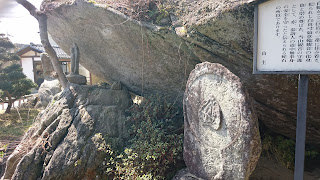
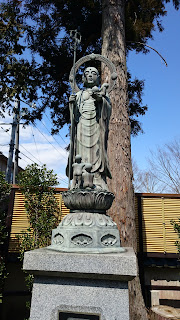





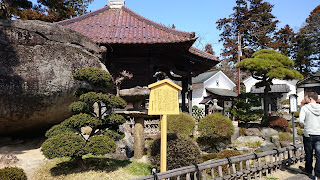














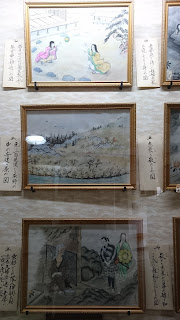






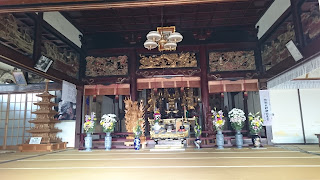



























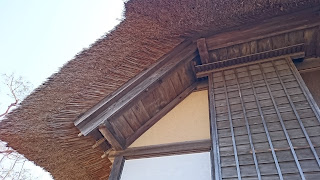































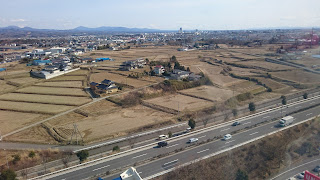










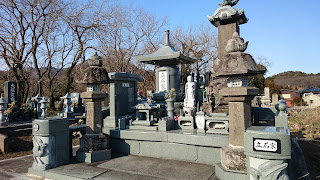









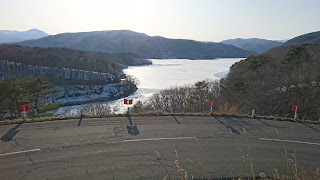




























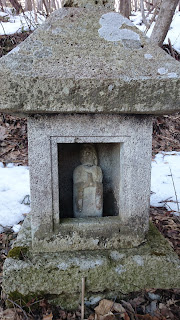





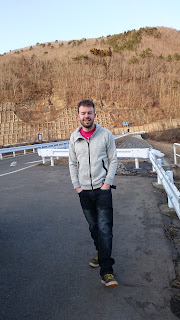


















No comments:
Post a Comment